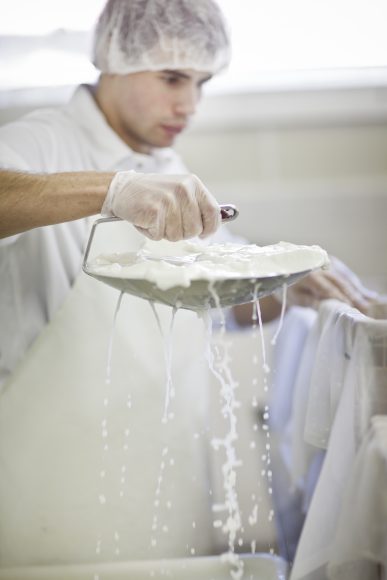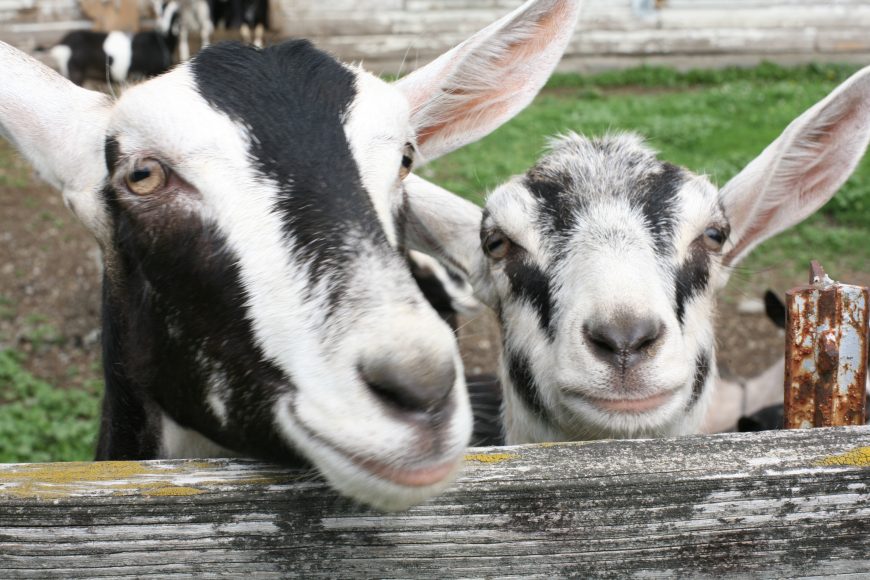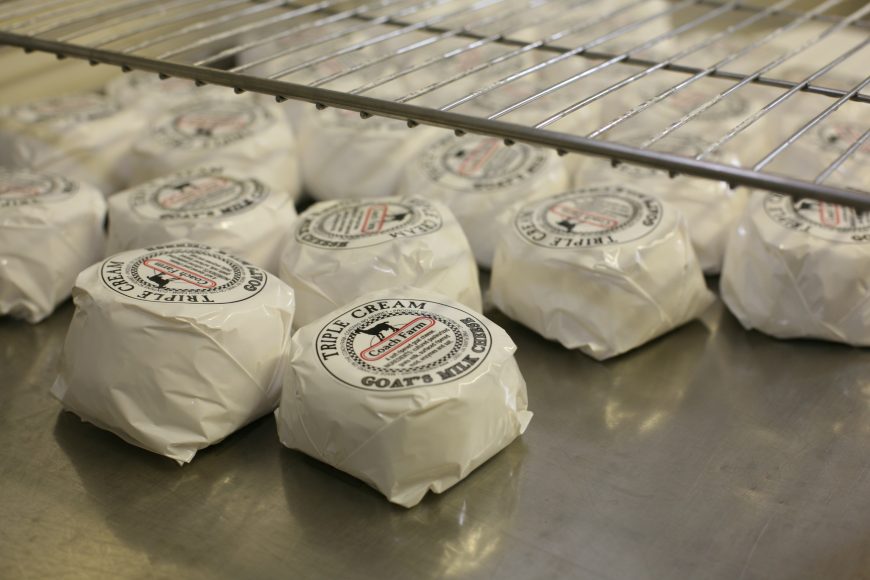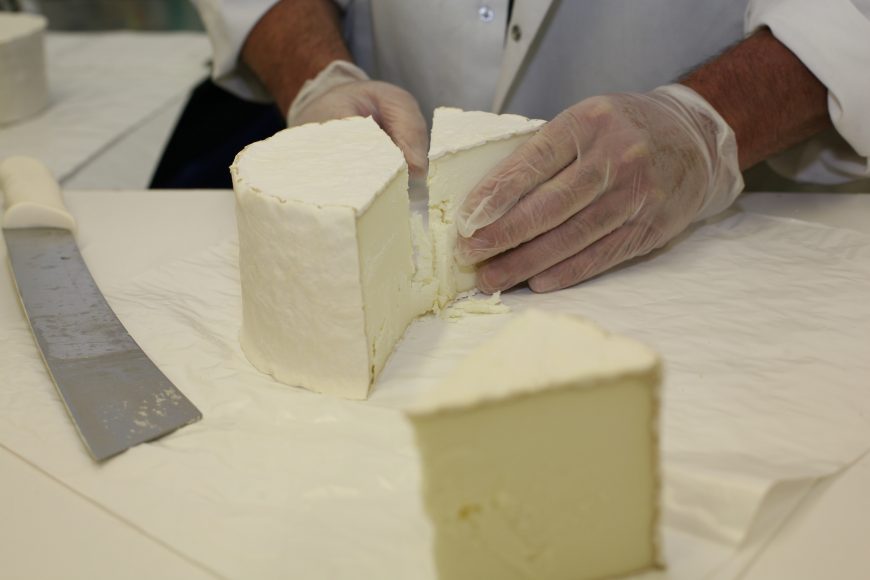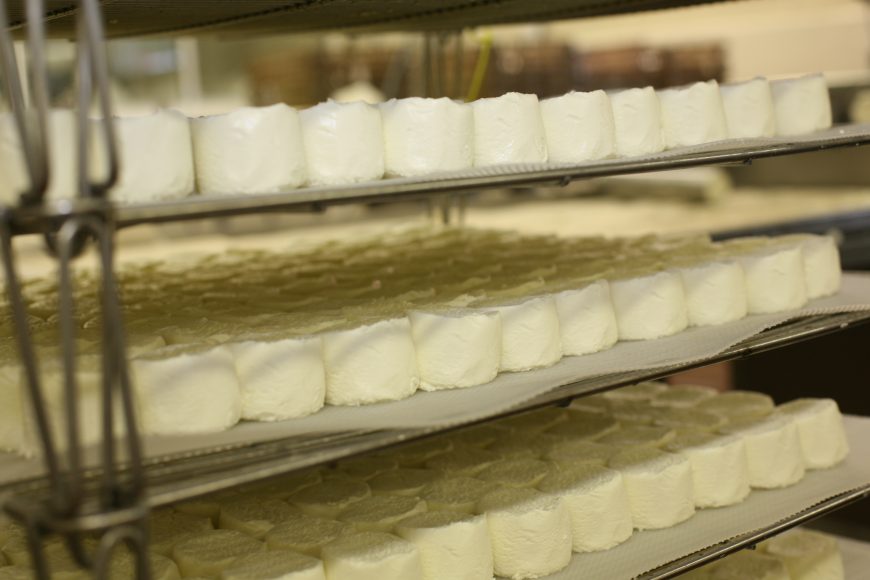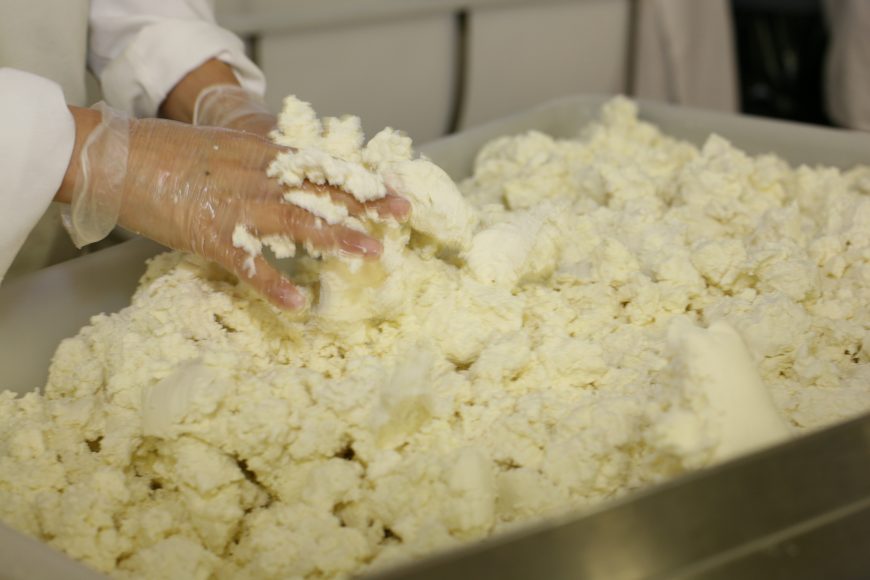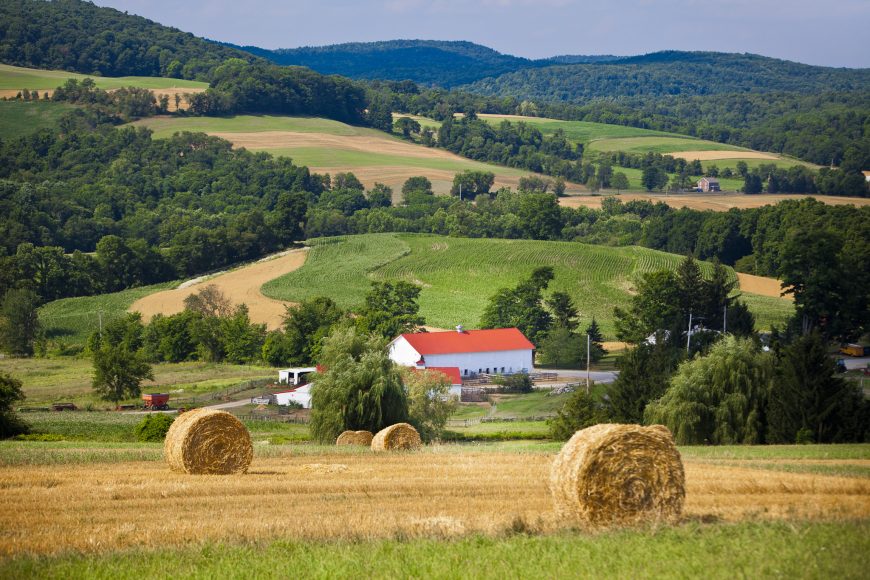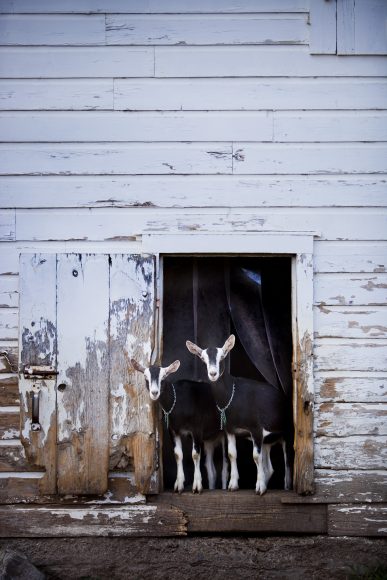We walked into a barn and the room went quiet, as if the goats had been talking about us just before we came in. The goats of Coach Farm, where they make the goat cheese, lined up at their trough, their heads pointing our way, poking out between the arms of a gate that divides the areas of the barn: where the goats live, where people walk.
They stared in unison, attentively, as if we were on a stage, the curtain had just opened and the audience was waiting to be entertained. (I didn’t tell a joke, but with the benefit of hindsight, I could have tried this: Why do sheep need chiropractors but goats don’t? Goats don’t have baaaa-ck problems.)
Goats are, social, playful things closer to dogs than cows – some with beards or “wattles,” others without – stumps wagging wildly, running around, hopping on their hind legs to get your attention, doing their best to solicit petting from the opposable thumbs set.
There are 800 goats at Coach, only 25 of which are males. The property is in the Columbia County hamlet of Gallatinville, overlooking a set of grassy hills that could have been, and maybe were, the subject of an old Thomas Cole painting. The entire town where the farm is located has a human population of only 2,000.
The farm was founded by Miles and Lillian Cahn, who formerly owned the Coach Leatherware Co. in Manhattan and made Coach handbags a well-known and well-coveted accessory. In 1985, the couple was in their 60s and bought the goat farm, up the Taconic State Parkway about two hours outside of the city, to pursue the dream of a more quiet life. Miles Cahn wrote a book about his experiences, “The Perils and Pleasures of Domesticating Goat Cheese,” in which he joked that he was held hostage by the goats on the farm. He told an interviewer once that he and his wife worked so hard at the farm that they ended up visiting the city to find peace and quiet. The Cahns sold the leatherware company in the 1980s to Sara Lee, then sold the farm in 2007 to Best Cheese Corp., which owns it today.
When the farm began, there was not much of a demand for goat cheese but a market has emerged alongside the growth of the artisanal movement. Steve Margarites is president of Best Cheese, which also owns Parrano cheese and Dairy Dial. He said goat milk products are considered easier to digest than cow milk products which makes them popular with the health-conscious crowd.
“We attribute the growth of goat cheese to increased international travels as well as visual television programming shows that are focusing on healthier choices for cooking needs,” he said. Some marquee chefs have used Coach products in their dishes and the farm has appeared on network television – Katie Couric once milked a goat on the air. Celebrity chef Mario Batali, one of the farm’s top customers, is married to the Cahns’ daughter, Susi.
Of course, niche market or not, it all comes down to taste. It is the goats’ diet, mostly local alfalfa, that is most important to the eventual flavor of the Coach cheeses. Goats aren’t disciplined grazers so controlling what they eat is key to limiting “background flavors” in their milk, cheesemakers say. At Coach, the animals have outdoor and indoor access but in the controlled environment only have access to foods chosen by their keepers.
The goats are French Alpines and are all born and bred on the farm (Coach sells many of the 100 pups born each year to other farms). They face the milking machine twice a day, getting to work once early in the morning before the sun rises and a second time late in the afternoon. They produce 7 pounds of milk per day on average and it takes about 10 pounds to make one pound of cheese. If there’s any doubt that a goat cheese farm is hard work, consider that cows on average produce 100 pounds of milk a day.
Transforming that goat milk into goat cheese is a scientific process overseen by Mark Newbold, a dairy chemist who spent six years working on research with Cornell University and who previously ran a dairy farm for several decades. Making cheese is a process that involves the precision of a chemist to produce a consistent flavor batch to batch. With a steady diet for the goats through all of the seasons, Newbold said the farm doesn’t see a decline in the amount of cheese it produces in the winter.
“We’re very careful,” he said. “It’s a clean and consistent process.”
The milk is pumped from the barn into the creamery, where it begins its transformation into cheese. At 2,800 pounds a load, the milk is poured into a pasteurization vat (as much as 25,000 pounds of milk is processed per week). The milk is then heated to 145 degrees during the process, which lasts about 30 minutes. It’s then cooled back down to 38 degrees, at which time cultures are added. Coach’s aged cheese has mold culture added, which will ultimately give it a sharper flavor and creates that bumpy, imperfect rind as an outer layer.
The cultures have to be added once cool, because at the higher temperature they would die from the heat. The batch ferments overnight before the whey is drained from the curd. It sits another day, with a coagulant added that is vegetable-based and GMO free.
The cheeses go out fresh, with a shelf life of about 10 days to three weeks for the hand-wrapped regular and aged cheeses, and as much as a four-month shelf life is expected for vacuum-sealed cheeses. The cheeses are sold in farmers markets and specialty stores, mostly in the Northeast region due to its freshness and short expectancy before it perishes.
Products include the fresh goat cheese, with a hint of a tart flavor and a consistency like cream cheese and the Rawstruck cheese, the farm’s only raw product which has that tart flavor that separates goat cheese from cow cheese. Some of the more popular products are fruit-infused cheeses like one with fig in it. The sweet fig counteracts the tart cheese and is more accessible a product to those who may be taking their first steps into the world of goat milk.
The farm has also unveiled a Yo-Goat drinkable yogurt that comes in several flavors, popular with the healthy-living set and a more easily digestible ingredient for smoothies. Coach also produces a yogurt in the Greek style. Newbold said the farm uses an ultra-filtration system to remove liquid – which means the goat milk yogurt needs more milk to produce less yogurt. It’s a thicker, spoonable yogurt.
“You can stick a spoon in it and it won’t flop around,” he said.
For more, or to order direct, visit coachfarms.com.
RECIPE:
Triple Cream Infused Burger
Ingredients
1 pound of hamburger meat
Salt and pepper to taste
1 6-ounce disc of Coach Farm’s Triple Cream cheese
1 package of fresh Portobello mushrooms
1 Vidalia onion, thinly sliced
1 package of your favorite burger buns
Directions
Remove ground beef from refrigerator and set it on the counter so it can come up to room temperature.
In a mixing bowl, combine your burger meat, salt, and pepper.
Using your hands, form six even-sized patties with the ground beef. (This is important because you are going to use two patties to form each burger).
Cut rind off of Coach Farm’s Triple cream, and cut into ½-inch cubes.
Place three to four Triple Cream cubes onto the center of three hamburger patties, taking care to leave room around the edges so you can seal the burgers on each side.
Seal the burgers by placing the remaining patties on top and pinching the edges around the filling. Set aside.
Heat medium pan on stove to medium heat. Add two tablespoons of butter, Portobello mushrooms, and thinly sliced Vidalia onion. Dust with salt and cook until desired tenderness.
Grill burgers on high heat for four to five minutes per side or until preferred.
Place infused burger on bun and top with mushroom and onion mixture.
Serve with your favorite chips or fries.

